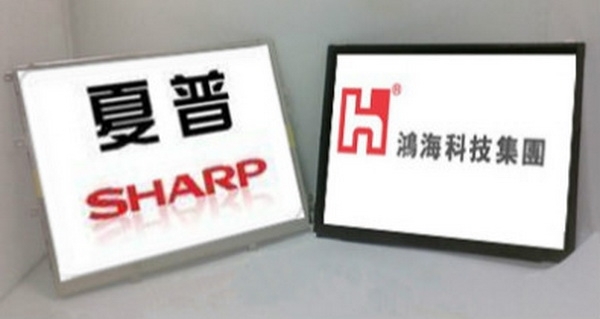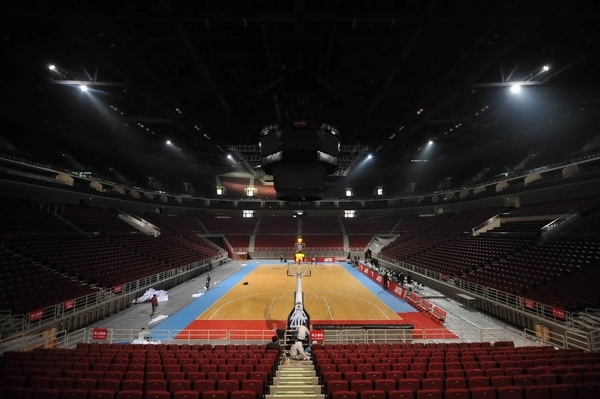

Highlights from the EO print edition, No. 563, Apr 2, 2012

Apple’s Supplier, Hon Hai Precision, Buys into Sharp
News, cover
~On March 27, Taiwan's Hon Hai Precision Industry Co., better known under its trading name, Foxconn, bought around 10 percent of Sharp Corp for $809 million, becoming the largest shareholder in the Japanese electronics firm.
~“Taking shares in Sharp is a great landmark event for Hon Hai. Chairman Guo values this matter very much, and he went to Japan to sign the contract.” Xing Zhiping (邢治平), a spokesman of Hon Hai Group told the EO on March 29.
~After Sharp reported a 290 billion yen loss (approximately 22.3 billion yuan), the largest in its history, the firm desperately needed new funds and partners to improve its operations.
~Takashi Okuda, the executive managing director of Sharp at the time and now the new president stated "Hon Hai Group is the best partner and exactly what we expected." This partnership will help to further reduce costs bolstering the loss-making Sharp television business, which is a major client on Hon Hai.
~Hon Hai decided that it won’t appoint members to Sharp's board despite being the largest shareholder.
~“In addition to the stake sale, the two parties will also cooperate in research and development. In the future, there is also the possibility of Sharp investing in Hon Hai," Hon Hai’s spokesman Xing stressed.
~ Hon Hai’s largest client is Apple, which accounts for 40 percent of its total orders.
Original article: [Chinese]
China' Banking Sector Reaches Turning Point
Market, page 17
~ The Chinese banking sector has peaked after growing rapidly for the last decade, a period in which its total assets expanded from 23.7 trillion yuan ($3.73 trillion) in 2002 to 113.28 trillion yuan ($17.86 trillion) in 2011, while its net profits grew 36 percent to 1.04 trillion yuan ($164 billion) in 2011.
~ Judging from their 2010 financial reports, the growth of most banks' profits had slowed down while bad loans had increased.
~ Liao Qun, the leading economic strategist with China Citic Bank, believes the growth in bank profits peaked in 2011, and has started to lose steam this year, even though they have continued to expand.
~ Bank of China posted the slowest profit growth among the four leading state banks. It saw net profits grow 19 percent for the whole of 2011, compared to 21.52 percent in the first three quarters of that year.
~ At the same time, bank assets have also been expanding more slowly. The Bank of Communications' assets grew by 17 percent to 4.61 trillion yuan ($726.84 billion) in 2011, compared to a growth of 19.4 percent in 2010.
~ China Minsheng Bank, whose assets grew 22.23 percent to 2.22 trillion yuan ($350 billion) in 2011, compared to a growth rate of 28 percent in 2010 and 35 percent in 2009.
~ Banks' profit margins are expected to decline this year compared to 2011, given the fact that the central bank has been easing restrictions on credit, thereby driving down interest rates.
~ The biggest problem is the country's outstanding loans, which stood at 56.2 trillion yuan ($8.9 trillion) in February. The goal of issuing 8 trillion yuan ($1.26 trillion) in new loans this year will probably not be achieved.
~ Increases in Bank deposits are also slowing, China Minsheng Bank's deposits stood at 1.64 trillion yuan ($258.6 billion) at the end of 2011, representing a growth of 16 percent. This is lower than the 40 percent growth in 2009 and the 25.62 percent growth in 2010.
~ Zong Lian, a leading strategist for Bank of China, said the slower development of the banking industry is not necessarily bad because it may help the industry evolve in a more healthy manner over the long term.
Original article: [Chinese]
Tencent to Merge E-Commerce Platforms
Corporation, page 25
~ The EO has learned that Shenzhen-based internet company Tencent is preparing a major integration of its e-commerce properties. Tencent's plans call for some of the top vendors on B2C platform QQ Mall - those with more practical capabilities, superior customer service, strong logistics capabilities, and ERP systems connected to Tencent's own - to be "upgraded" to the new QQ Buy platform.
~ More than a dozen brands have already begun preparations for the upgrade, after which they will be featured on the "Brand Street" channel of QQ Buy, and Tencent's Paipai auction site could become the C2C "Jishi" ("Market") section of QQ Buy.
~ Song Yang, Tencent's deputy GM for e-commerce platforms, said that in the future Tencent would have only one chief e-commerce brand: "QQ Buy."
~ After QQ Mall vendors are "upgraded" to QQ Buy, Song said, the site will direct e-commerce searches to two "entrances:" Paipai, which will host small and mid-sized vendors, and QQ Buy, which will host major B2C vendors.
~ The "Jewelry" channel for QQ Buy, for instance, will be operated mainly by the Tencent-invested diamond retailer Kela Diamonds.
~ The greatest difficulty in simultaneously operating three platforms, Song said, is that traffic is diluted by users arriving at Tencent's e-commerce platforms through multiple points of entry - while the potential also exists for price discrepancies for the same item on multiple platforms.
~ Song said that QQ Buy would not invest in warehousing or logistics: rather, it will integrate vendors' own logistics, warehousing, and product information in order to unify shipping arrangements.
~ Next, Tencent will upgrade its e-commerce platform to initiate partnerships with B2C companies in which it has invested, and other major B2C companies, with Tencent assuming greater responsibility for services. After this, Tencent will connect supply and shipping chains to other major B2C platforms.
Original article: [Chinese]

Head of Huawei’s Online Business Resigns
Corporation, page 25
~The story of Huawei’s four-year-old online department isn’t well known, but two things have recently caught people’s attention: the launch of its e-commerce platform, vmall.com, and the resignation of its head Zhu Bo (朱波).
~ Zhu had wanted to separate out his department from the rest of the company, but his idea wasn’t backed by the company, employees at Huawei’s online department told the EO.
~ “Zhu’s ideal was to put Huawei’s internet business on a par with Tencent, but Huawei’s overall goal for the internet business was to serve its users, " a source close to Mr. Zhu told the EO.
~Mr. Zhu joined Huawei in 2008, and in the second half of that year, Huawei launched its online department.
~The character of internet businesses - high profile and high exposure - is opposite to Huawei’s low-key style.
Original article: [Chinese]

Hongqi: The Third Coming
Automobile, page 33
~ According to China's First Automobile Works Group (FAW), a state-owned conglomerate that produced the PRC's first car in 1958, the latest model of the Hongqi (Red Flag) brand, will debut at the Beijing Auto Show in late April.
~ An insider told the EO that Xu Jianyi, president of FAW, has put reviving the Hongqi brand as the top priority for the company this year.
~ The H7 will start being sold next year, sharing the same distribution channels as the mid-range FAW Besturn (Benteng).
~ The Hongqi brand gradually lost its position in the market in 1980s, largely due to the fact that the cars guzzled fuel.
~ Geng Zhaojie (耿昭杰) and Zhu Yanfeng (竺延风), the two former CEOs of the company, both tried to regain the standing of Hongqi brand during their terms, but both failed.
~ Over the past 20 years, FAW has invested more than 10 billion yuan in the Hongqi brand.
~ "The most important mission for FAW now is to revive Hongqi brand which concerns our national dignity," Xu Jianyi said during this year's "Two Sessions."
~ According to the industry experts, the revival of Hongqi brand will face two major challenges. The first one is the cost pressure due to its small-scale production. The other is the shared distribution channel with the less classy Besturn models, a disadvantage in attracting high-end customers.
Original article: [Chinese]

Beijing's Basketball Team Upgrades to Wukesong
Lifestyle, page 59
~ The Beijing men's basketball team has moved their home base from the remote Shougang Basketball Center to the Olympic basketball stadium at Wukesong, which is now known as the Mastercard Center.
~ It's a big shift for the Beijing Ducks, the former stadium could only seat about 2,000 fans whereas Wukesong has a capacity of 18,000.
~ The income earned at the gate from tickets sold at the first three games at the Wukesong staduim is more than the total income earned from 20 games at Shougang.
~ The former Shougang stadium had other draw backs too - with few public transportation links and a lack of parking options, basketball fans had to fight for "black taxis" after the game.
~ Catering was also poor, with no food allowed inside the stadium and no drinks being sold. It was a common site to see thousands of basketball fans crowd into the Japanese fast food restaurant on the first floor before and after games.
~ It was also common for spectators at Shougang to smoke as they watched the games, leaving those sitting in the upper seats to try make out the action through the haze.
~ The Wukesong sports center is a complete change. As the first basketball center of the NBA standard in China, Wukesong has hosted both Olympic and NBA teams and boasts top-grade facilities. However, such a luxurious center doesn't come cheap.
~ It seems that only when the Beijing team made the finals of the local competition were they sure they had the ability to attract enough people to fill such a large stadium.
Original article: [Chinese]

